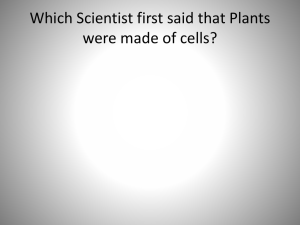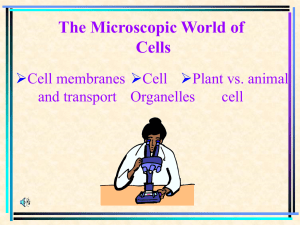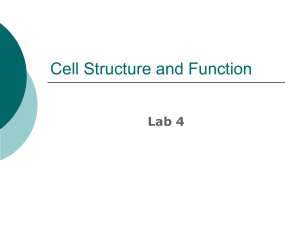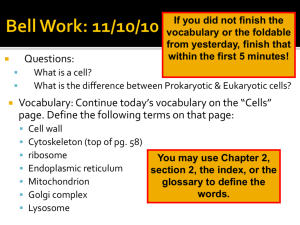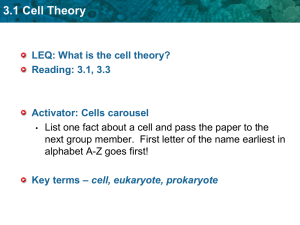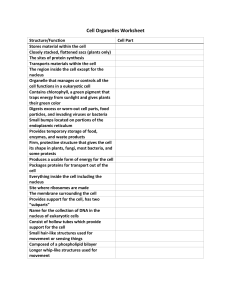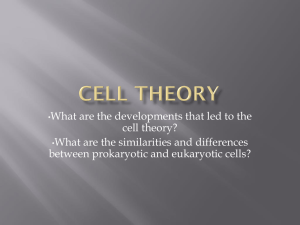Cell Structure & Function
advertisement
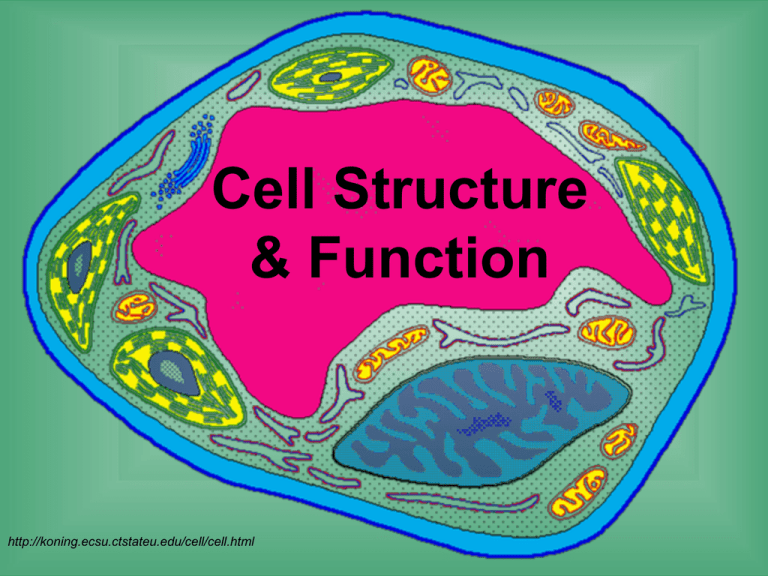
Cell Structure & Function http://koning.ecsu.ctstateu.edu/cell/cell.html Cell Theory • All living things are made up of cells – Bacteria, plants, YOU! – Viruses are not cells and cannot live alone • A cell is the simplest living thing that can have a “life of its own” • All cells come from preexisting cells – Cells divide to form new copies of themselves Bacterial growth over 4 hours Human growth over 18 years Plant growth over 20 days Cells: “Life factories” A cell is the smallest unit that is capable of performing life functions. http://glencoe.mcgraw-hill.com/sites/dl/free/0078617022/164155/00035804.html Examples of Cells Amoeba Proteus Plant Stem Bacteria Red Blood Cell Nerve Cell http://www.cellsalive.com/howbig.htm Two Types of Cells •Prokaryotic – usually single-celled (unicellular) organisms •Eukaryotic – usually found with other cells to make up more complex tissues Prokaryotic cells (prokaryotes) • Few internal structures • Where is the nucleus?!? • Single-celled organisms, bacteria Eukaryotic cells (eukaryotes) • Contain organelles surrounded by membranes • Most living organisms are made of eukaryotic cells • Two types: Plant and animal Plant Animal http://www.cellsalive.com/cells/cell_model.htm Cell Parts Organelles Surrounding the Cell Cell Membrane • The walls/security • Outer membrane of cell that controls movement in and out of the cell • Double layer Cell Wall • Most commonly found in plant cells & bacteria • Supports & protects cells Inside the Cell Nucleus • Directs cell activities • Separated from cytoplasm by nuclear membrane • Contains genetic material - DNA Chromosomes • Everything “in a nutshell” • In nucleus • Made of DNA • Contain instructions for traits & characteristics Cytoplasm • Gel-like mixture • Surrounded by cell membrane • Contains hereditary material Mitochondria • The energy powerhouse • Breaks down fats & carbohydrates to produce energy • Controls level of water and other materials in cell • Recycles and decomposes proteins, fats, and carbohydrates Vacuoles • Storage and waste departments • Membrane-bound sacs for storage, digestion, and waste removal • Contains water solution • Help plants maintain shape (internal pressure) Chloroplast • Usually found in plant cells • Contains chlorophyll – GREEN! • Where photosynthesis takes place What functions does your body perform that are similar to those of a cell?

